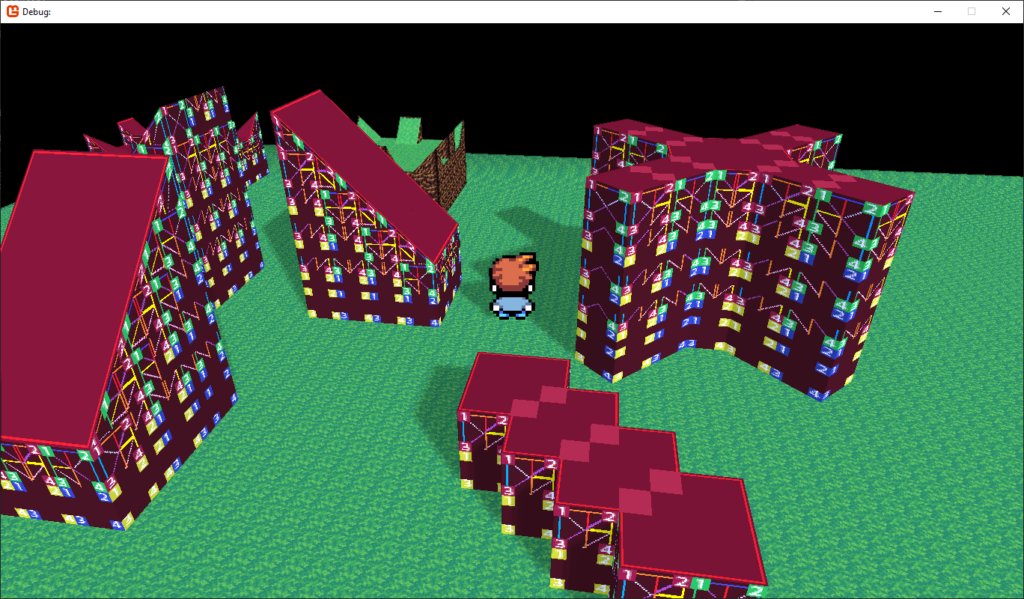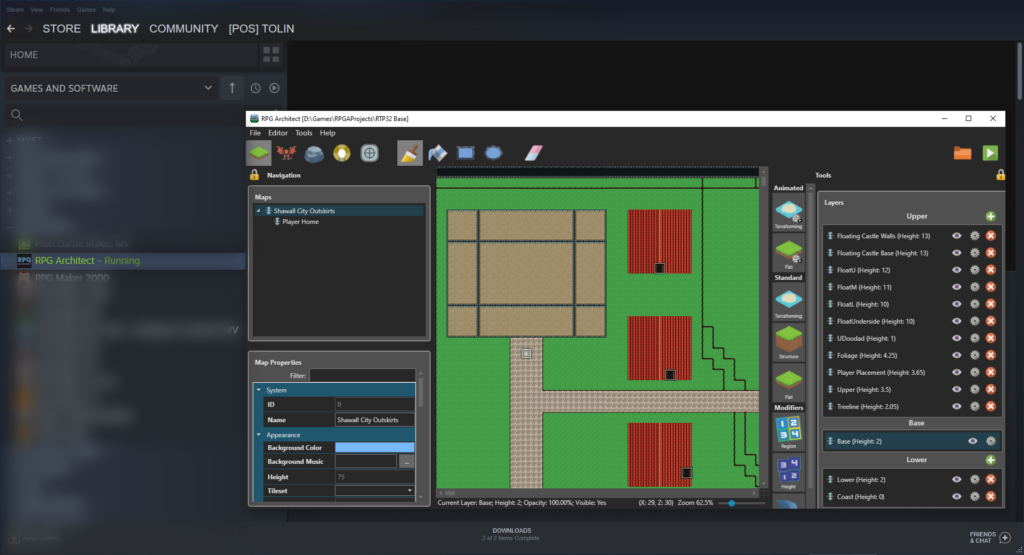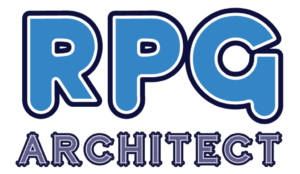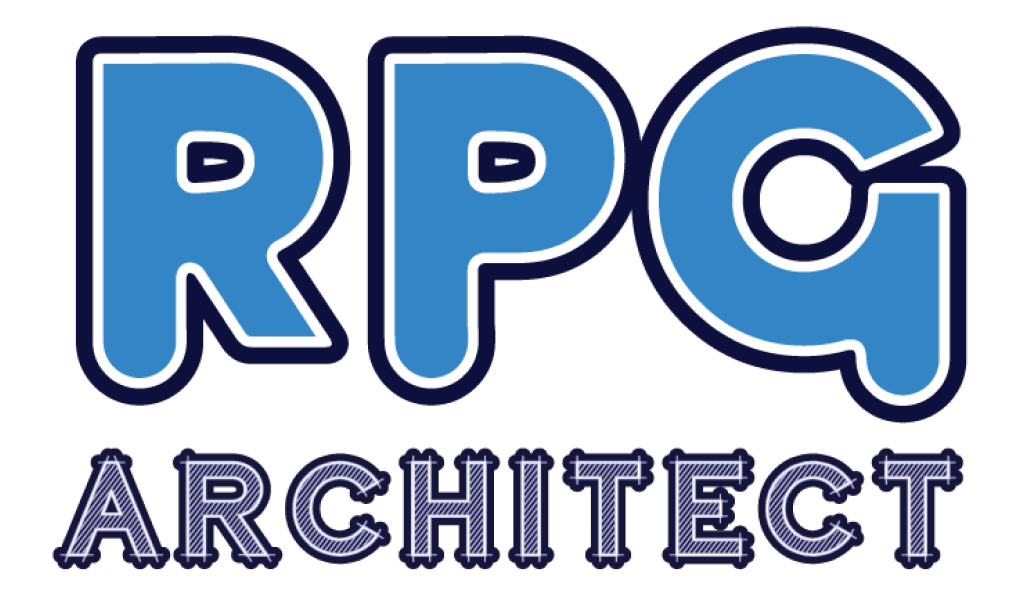Like last month’s update, I’ve put a lot of focus into quality of life and stability updates.
One of the first (and most important) things was to get music working a bit better. As such, the entire music system has been completely rewritten from scratch. Better support and control of how it plays is now built-in. Unfortunately, this isn’t one of those things I can show a pretty screenshot with.
Ramps and edges have been updated as well to better reflect edges. There was a lot of post-processing occurring to translate 2D into 3D, but I’m very satisfied with the results. Edges are now very clearly defined on these two types and behave consistently. In total, it took roughly three days of very hard work to sort everything out.

There were a number of fixes made to the Physics engine. Previously, we had to simulate where something would appear. Not anymore. Now, everything is working exactly as you would expect. Part of the overhaul also added support for Tile Tags and Tile Collisions! Tile Tags will allow you to start configuring things like “make sounds when you walk on this” or “show this animation on the tile” (footprints in snow, ripples in water) or “take damage or inflict this status effect upon entry.” Tile Collisions are a little more simplistic — either you can pass over the tile or not. Collisions are going to be more important for 2D games that have simplistic movement and no real “physics” involved. For more fine-tuned physics, you’ll want to build your world in 3D (and just ignore the 2D details).
There was a massive overhaul to the commands/scripting on the backend. The commands, prior, had some unusual behaviors when clicking around, which has since been fixed. Several are starting to leverage the translation services that are build into RPG Architect. That’s still a big to-do, before we hit release. Eventually, there will be a big “translation” controller that users will be able to use to update RPG Architect into their own native language. A question I’ve gotten a few times… “Are you going to support native translation of my game into another language?” That is planned as well — just in due time!
Probably one of the biggest updates, though, is that we’re really gaining Steam… Some say, it might be a trick… or a treat… More news on that… next update.

There was a lot of work getting us ready for Steam. A big shout-out to all of the Architects and Collaborators. This has been a very trying process, and your dedication to help make this happen has let me spend more time on actually building the engine.
The last update I’ll cover has to do with how the editor and engine work together. RPG Architect works on the idea of “cores” which can be swapped/interchanged. They plug into the game engine, which provides a lot of low-level worker methods to do different things, such as play music, render a scene, etc. The cores, prior, were replaced every time you opened your project, which was problematic if you were updating the game frequently, etc. Now, the game engine itself allows for the cores to be supplied via command line parameter (which is how they work in the editor now), so that you’re never worried about overriding them over and over again. Of course, when you distribute your game, the cores will need to be included, but that’s a topic for another time.
There’s still a lot of work to do to get us ready for Steam — more tutorials, videos, and content. Aside from general hardening of the engine, the battle system will get some more work, some new user interface elements will get added, and overall flow will improve in the next update — just in time for some really big news!

